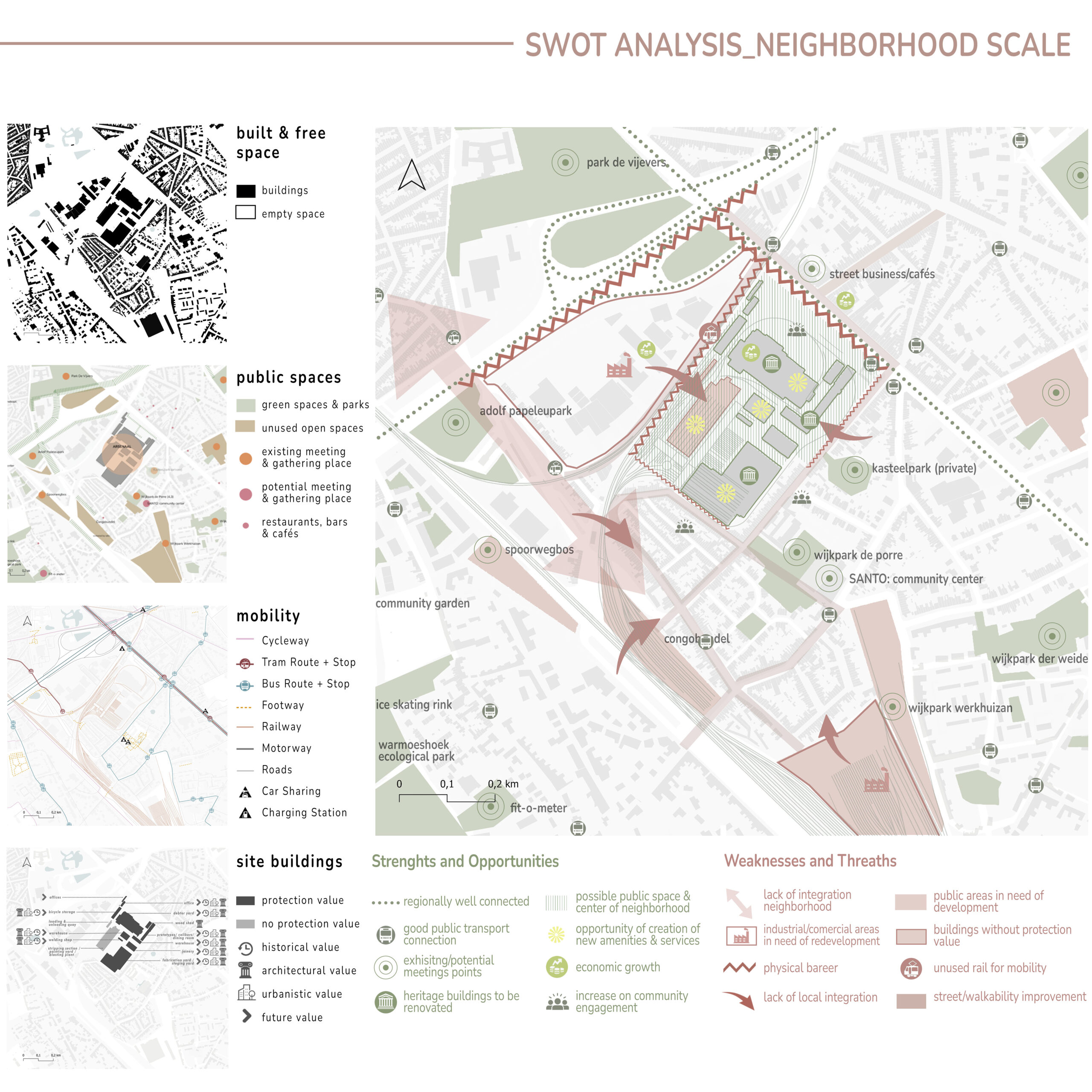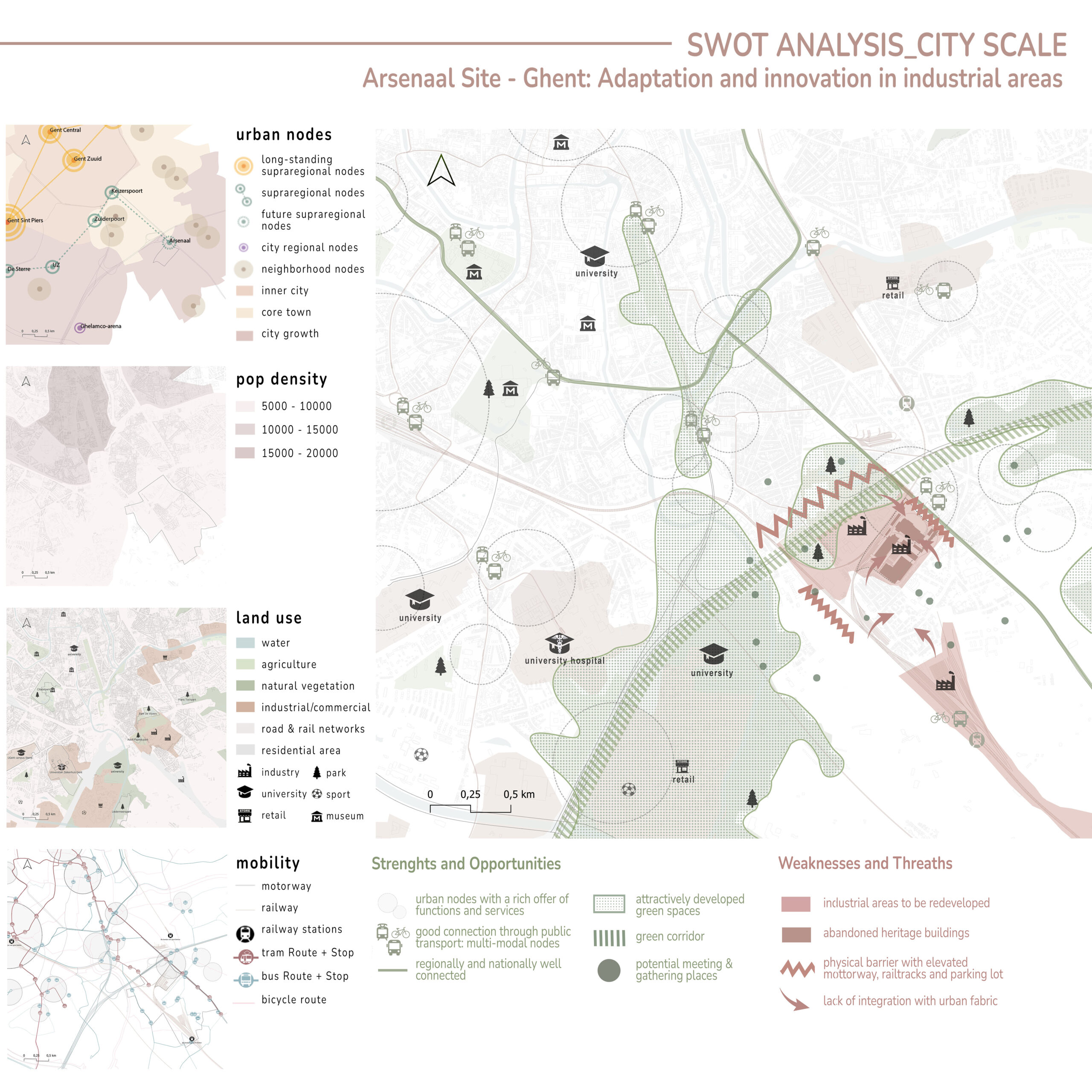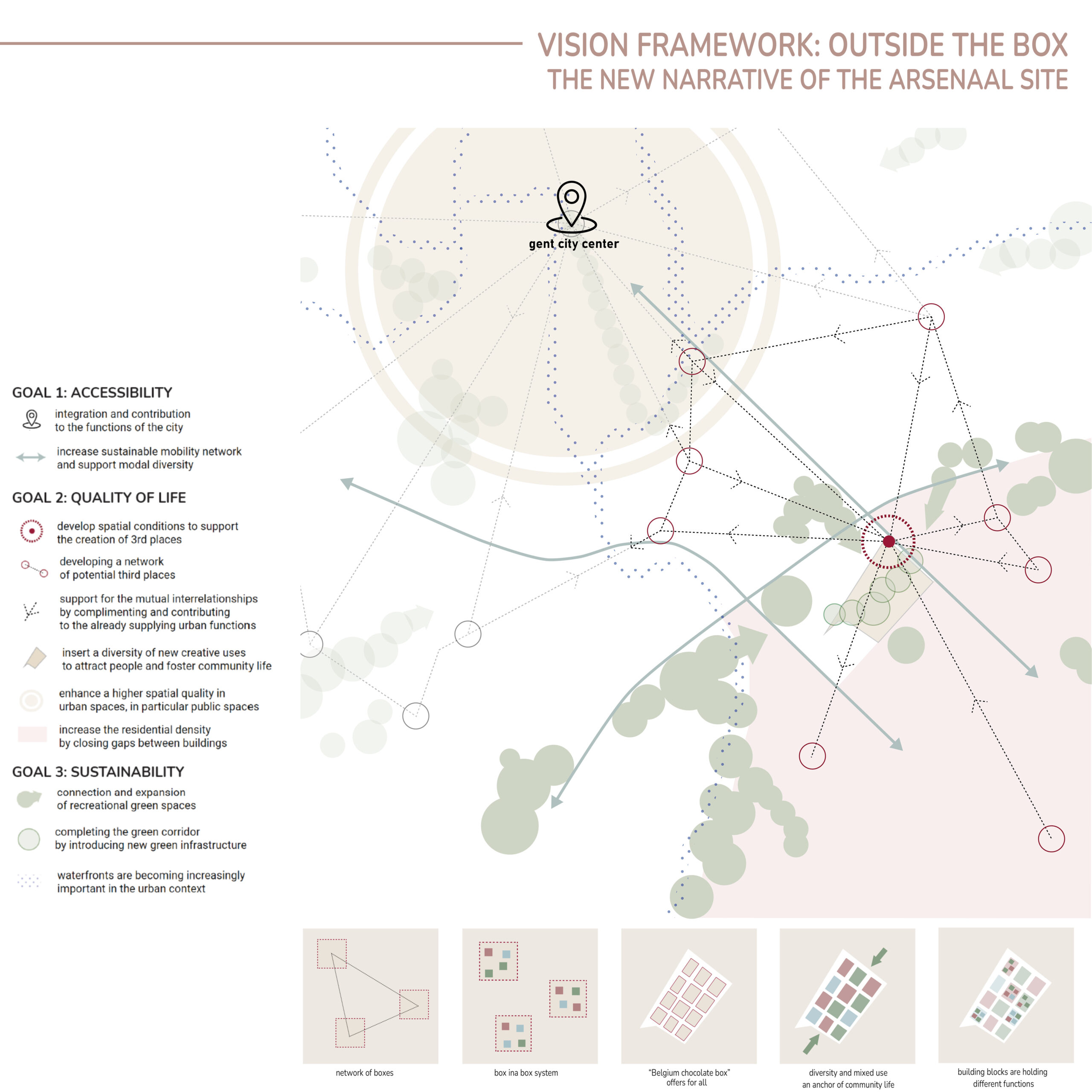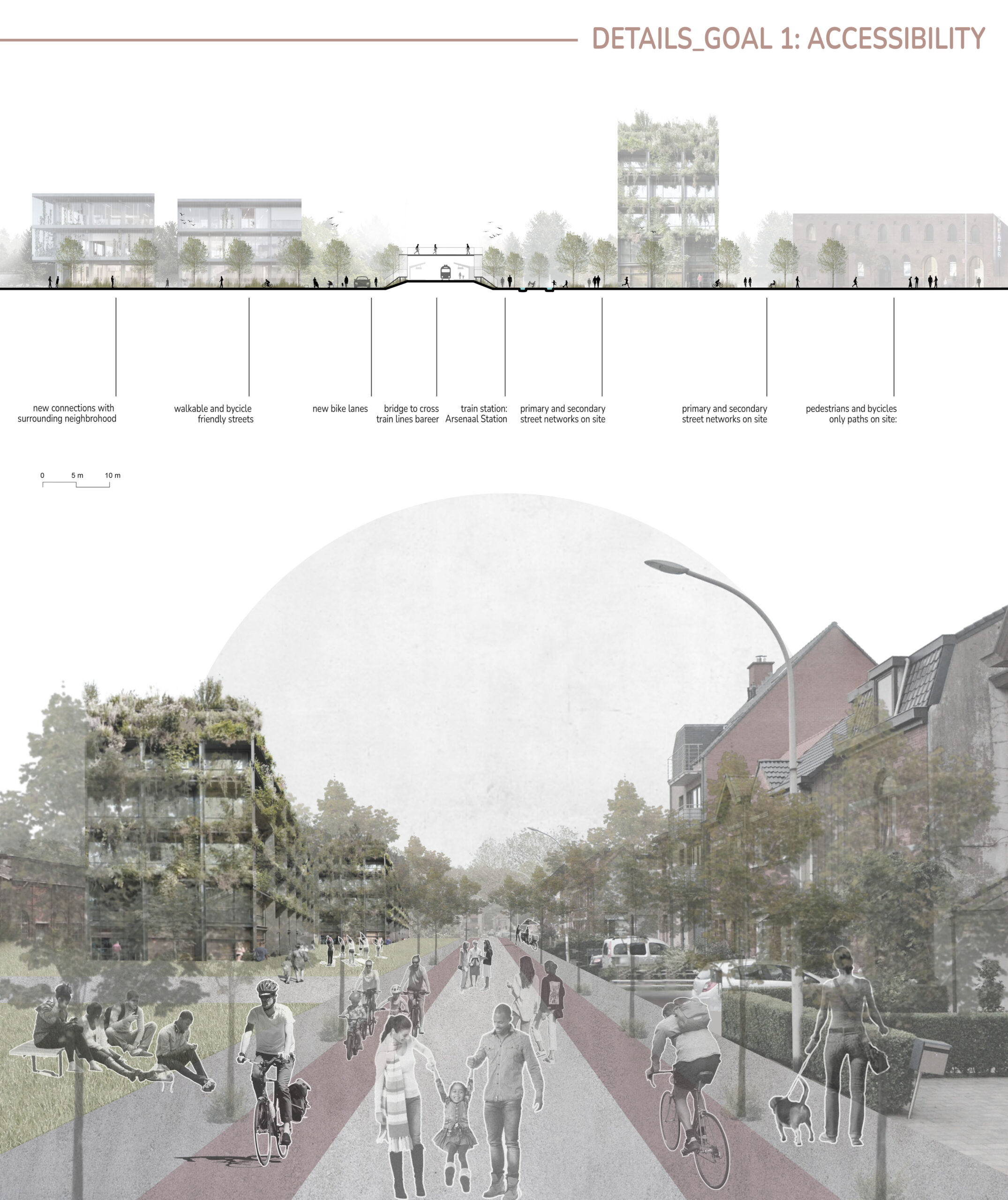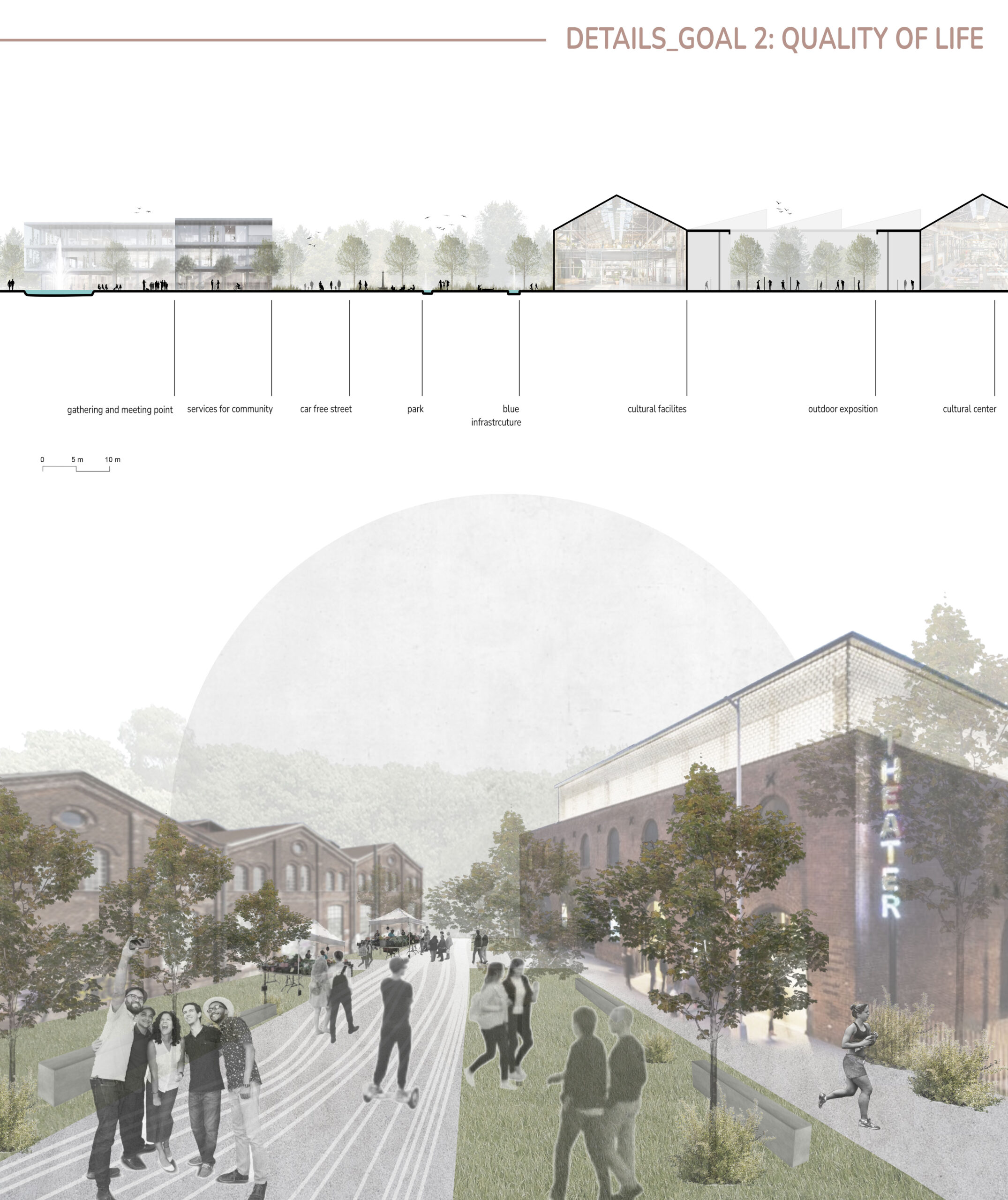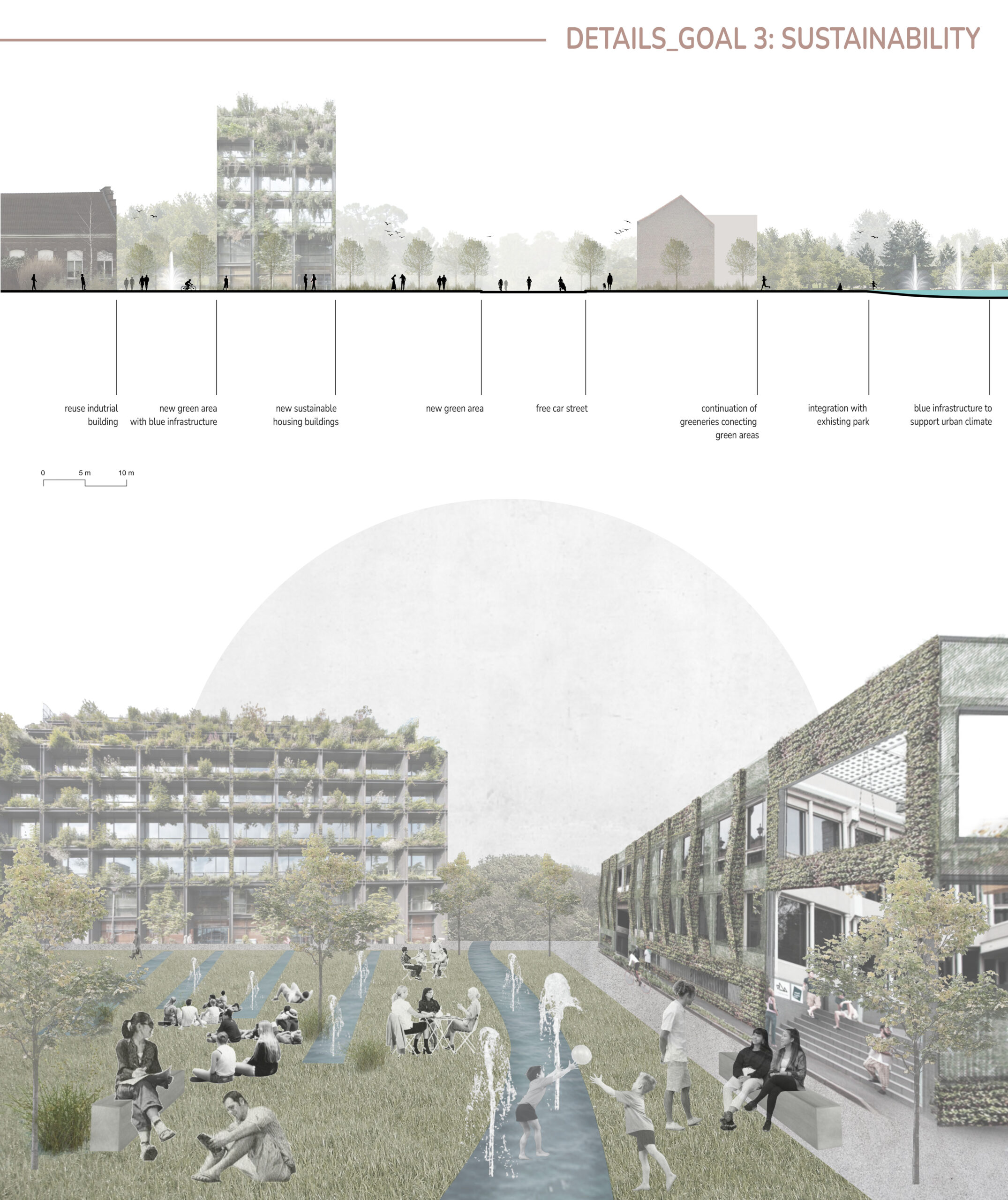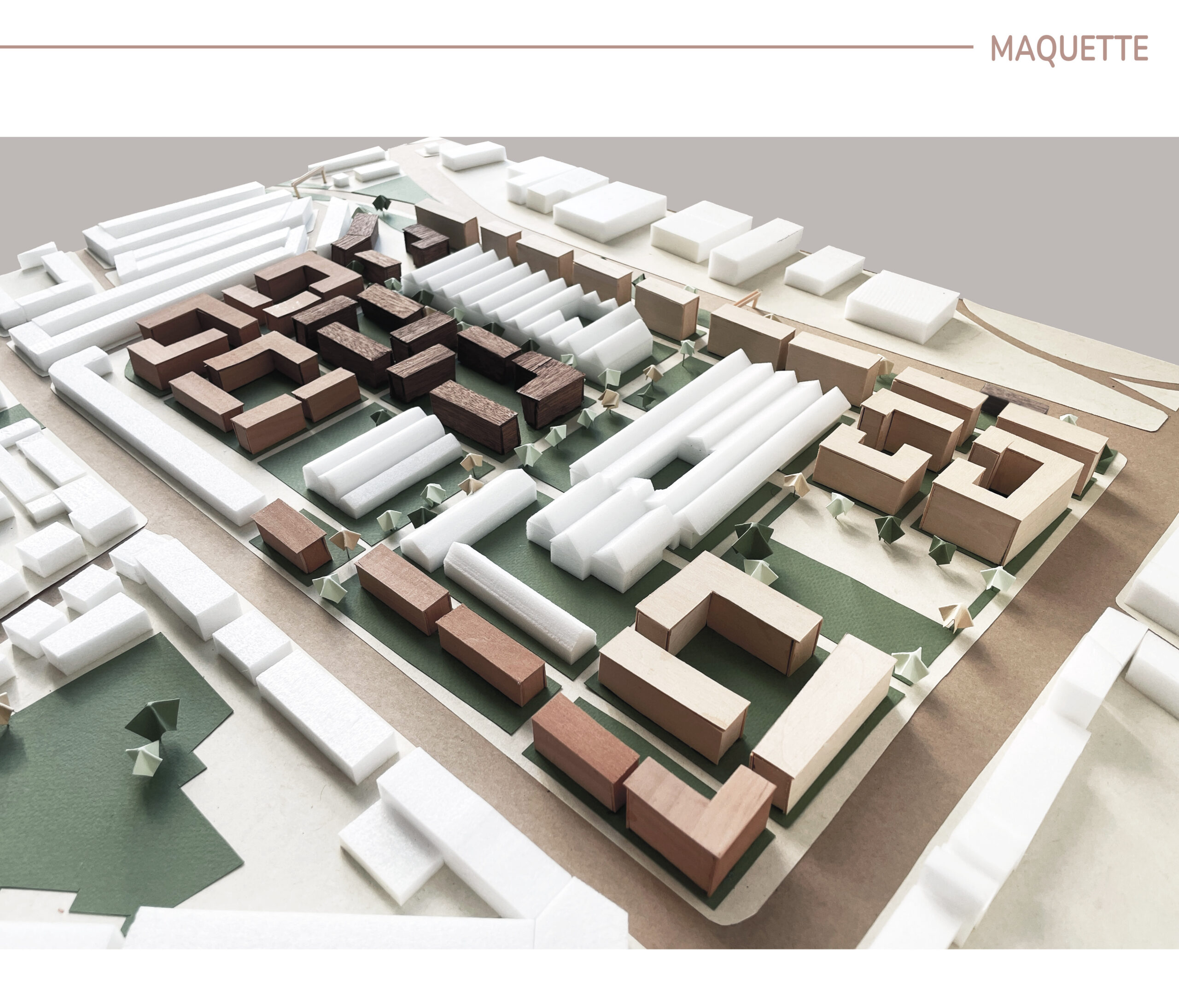Outside the Box: Creating potential third places to reinforce community engagement and a sustainable high quality of urban life.
A project by : Ane de Souza Ferreira da Costa and Christiane Gerwenat
Integrated Project II
Case Study: Arsenaal Site, Ghent – Belgium. Adaptation and innovation in industrial areas
Teaching staff: Fabio Bayro Kaiser, Javier Ostos Prieto and Eva Hoppmanns
The city of Ghent faces many challenges, such as ensuring quality urban life in the face of ongoing major urban transformations of urbanisation, demography and climate change. To face these challenges and to improve urban spaces a multidisciplinary cross-sectional approach is necessary. Beyond that, space is a finite resource, thus the already used areas must be densified and quality interspaces must be created aiming a balance between densification and creating room for breathing. The existing industrial heritage of historic value should be adapted as new functions are needed while balancing variables and constants to ensure sustainable development.
Therefore, the presented strategy aims to enhance the Arsenaal site and the surrounding neighbourhood by focusing on the three key objectives “Accessibility, Quality of Life and Sustainability”. Further on, a special tool to create quality and lively places was Oldenburg’s Third Place theory, which supported the desire of focusing on public spaces and community cohesion.
By applying the presented development strategy, we aim to fulfil the needs of residents and visitors, to support sustainable development for the area, on which the Arsenaal site can support and improve the neighbourhood while fulfilling the functions of a supra-regional node inside the city node’s network.
